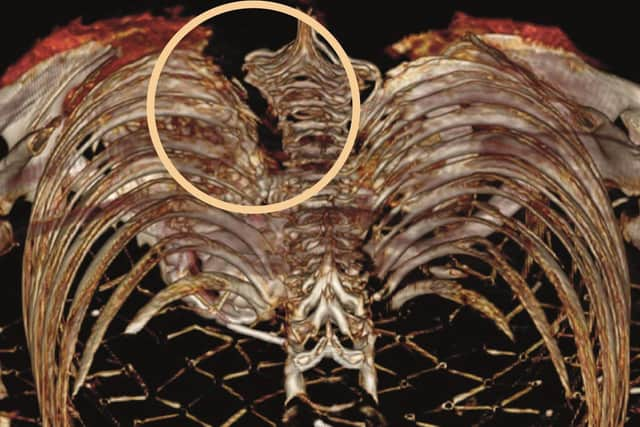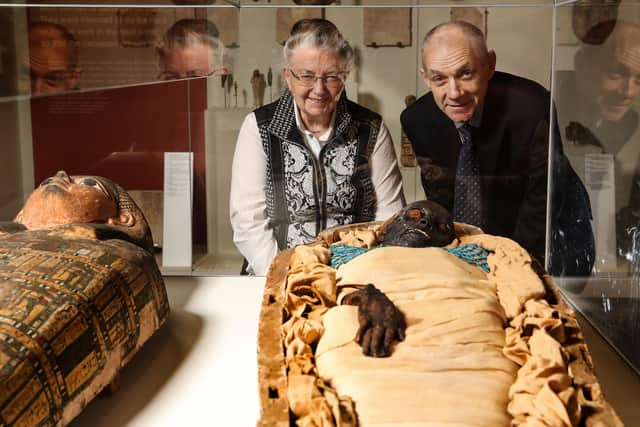2,600-year-old murder mystery at Ulster Museum


Using the latest state-of-the-art scanning and DNA technology, scientists working at the Ulster Museum have established that the young citizen of Thebes was more genetically similar to Europeans rather than modern Egyptian populations – and that she suffered a fatal knife-wound to her upper back.
The famous mummy was brought to Belfast in 1834 by Thomas Greg from Holywood, Co Down.
Advertisement
Hide AdAdvertisement
Hide AdTakabuti lived over 2,600 years ago – in the area of modern-day Luxor – was probably married as a ‘mistress of the house’. She died in her 20s.


A team of experts from National Museums NI, University of Manchester, Queen’s University Belfast (QUB) and Kingsbridge Private Hospital carried out the latest research.
University of Manchester Egyptologist professor Rosalie David said: “This study adds to our understanding of not only Takabuti, but also wider historical context of the times in which she lived: the surprising and important discovery of her European heritage throws some fascinating light on a significant turning-point in Egypt’s history.
“This study, which used cutting-edge scientific analysis of an ancient Egyptian mummy – demonstrates how new information can be revealed thousands of years after a person’s death.
Advertisement
Hide AdAdvertisement
Hide Ad“Our team – drawn from institutions and specialisms – was in a unique position to provide the necessary expertise and technology for such a wide-ranging study.”


The new scans show that Takabuti was stabbed in the upper back near her left shoulder and that it was the cause of her death.
Dr Greer Ramsey, curator of archaeology at National Museums NI, says advances in scientific techniques have made the new findings possible.
“There is a rich history of testing Takabuti since she was first unwrapped in Belfast in 1835. But in recent years she has undergone x-rays, CT scans, hair analysis and radio carbon dating,” he said.
Advertisement
Hide AdAdvertisement
Hide Ad“The latest tests include DNA analysis and further interpretations of CT scans which provides us with new and much more detailed information.”
QUB bioarchaeologist Eileen Murphy said it “has been an incredible privilege” to have been involved in the Takabuti project.
“The latest research programme has provided some astounding results,” Professor Murphy said.
“It is frequently commented that she looks very peaceful lying within her coffin but now we know that her final moments were anything but and that she died at the hand of another.”
Advertisement
Hide AdAdvertisement
Hide AdA book detailing all of the new findings is currently being produced by the project team.
Further information about the latest research is available at the Ancient Egypt gallery at the Ulster Museum. Admission is free.